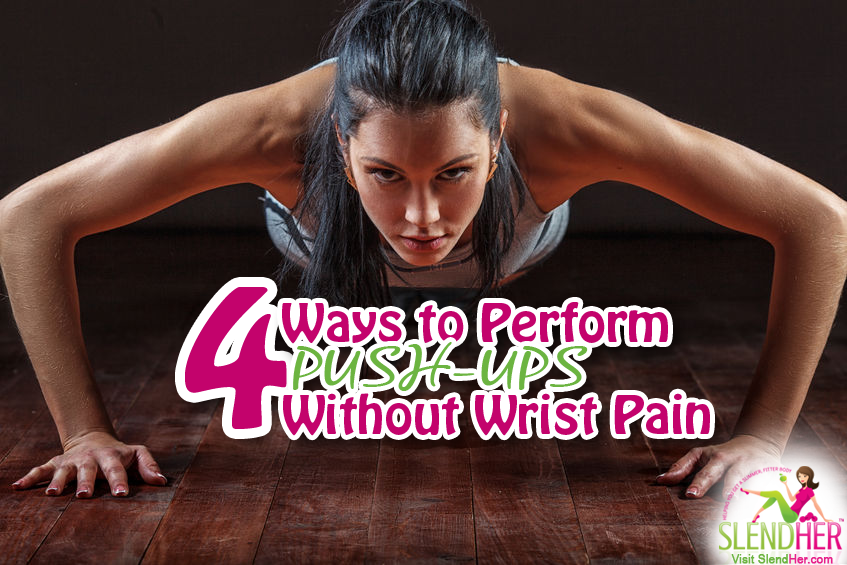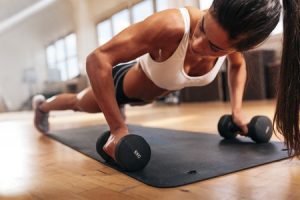
Push-ups–we love ‘em! They require zero equipment, are easily scaleable for beginners and pros and everyone in between, work a whole of lot of upper body muscles, and can lead to rock-hard abs sans sit-ups. But for as great as push-ups may be for the body, but they’re not always so easy on the wrists.
The Problem of Wrist Pain
If you experience wrist pain during push-ups, a number of problems could be at play:
- Injury: If you’ve ever sprained or broken your wrist, it can be painful to perform push-ups without wrist pain. Be sure to follow doctor’s orders when it comes to healing time and necessary therapy/treatment following an injury. But even years after everything has healed, don’t be surprised if your wrists still don’t feel 100 percent under the pressure of a push-up.
- Strain: If you work on a computer or are addicted to texting, your hands and arms (wrists included) are getting a workout above and beyond what you do at the gym. This may mean your wrists are getting strained–especially if your desk time and gadgets lack ergonomic support. You may not feel it when you’re typing away, but put weight on your wrists in the push-up position and pain is sure to make an appearance.
- Form: Proper positioning is so important to staying pain- and injury-free whether you’re doing bodyweight movements or strength-training exercises.
Do Push-Ups Without Wrist Pain

If you have painful wrists while doing push-ups, it may seem as though there’s no chance for your chest, shoulders, triceps, traps and abs to receive the body benefits only push-ups can deliver. But not so! With the following tips, you’ll be able to keep up your push-up program without feeling a pain in the wrist.
- Switch to fists: To keep your wrists in a more neutral position without having to support your entire upper body weight, perform push-ups on your wrists with the flattest part of your fingers on the ground. This will help your wrists to remain straight and upright, not to mention make you look like a bit of a bad ass, too.
- Move to a machine: If your fingers feel like they’re getting crushed in the fists position, then you’ve only moved the pain from one place to another–no bueno! For another neutral wrist option, lock the barbell of a Smith machine into a low position and perform a push-up while gripping the bar. Depending on advanced your push-up is, the angle of the bar may decrease the intensity of the movement. If this is the case, create the angle you need by propping up your feet on a block, stack of weighted plates, bench, or exercise ball (which will amp up your core work, too).
-

Use dumbbells, kettlebells, or portable stands to take the big bend out of your wrists. Take a stand: Don’t have access to a Smith machine? That’s OK. Instead invest in a set up push-up stands. Portable stands are typically small in cost, but big in pain-free rewards. The grips are easy on your hands, and allow you to keep your wrists nice and straight instead of at extreme angles. Better yet, if you have a set of dumbbells or kettlebells, skip the stands and treat these two heavyweights as stands instead.
- Change your position: You may be able to keep your palms flat during a push-up by simply moving around other parts of your body. First, check your hands. They should be just below your shoulders or slightly wider. Too wide or too far either forward or back, and your wrists may scream at you. Second, the elbows. Keep them tucked in versus winged out to the side. They should be in a 45-degree angle and parallel with your trunk. Last, your hips. Similar to performing a plank, your body should create one straight line from head to toe. That means don’t let your hips sag toward the floor and don’t angle your butt up into the air. Not only will you perform a better push-up when you correct these common form faux pas, but also your wrists may get the relief they need.
What hurts when you workout? Share with others in the comments!

Leave a Reply